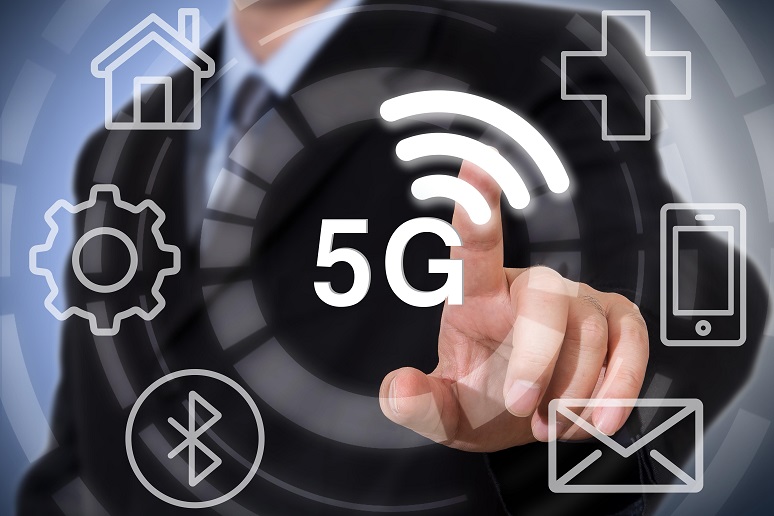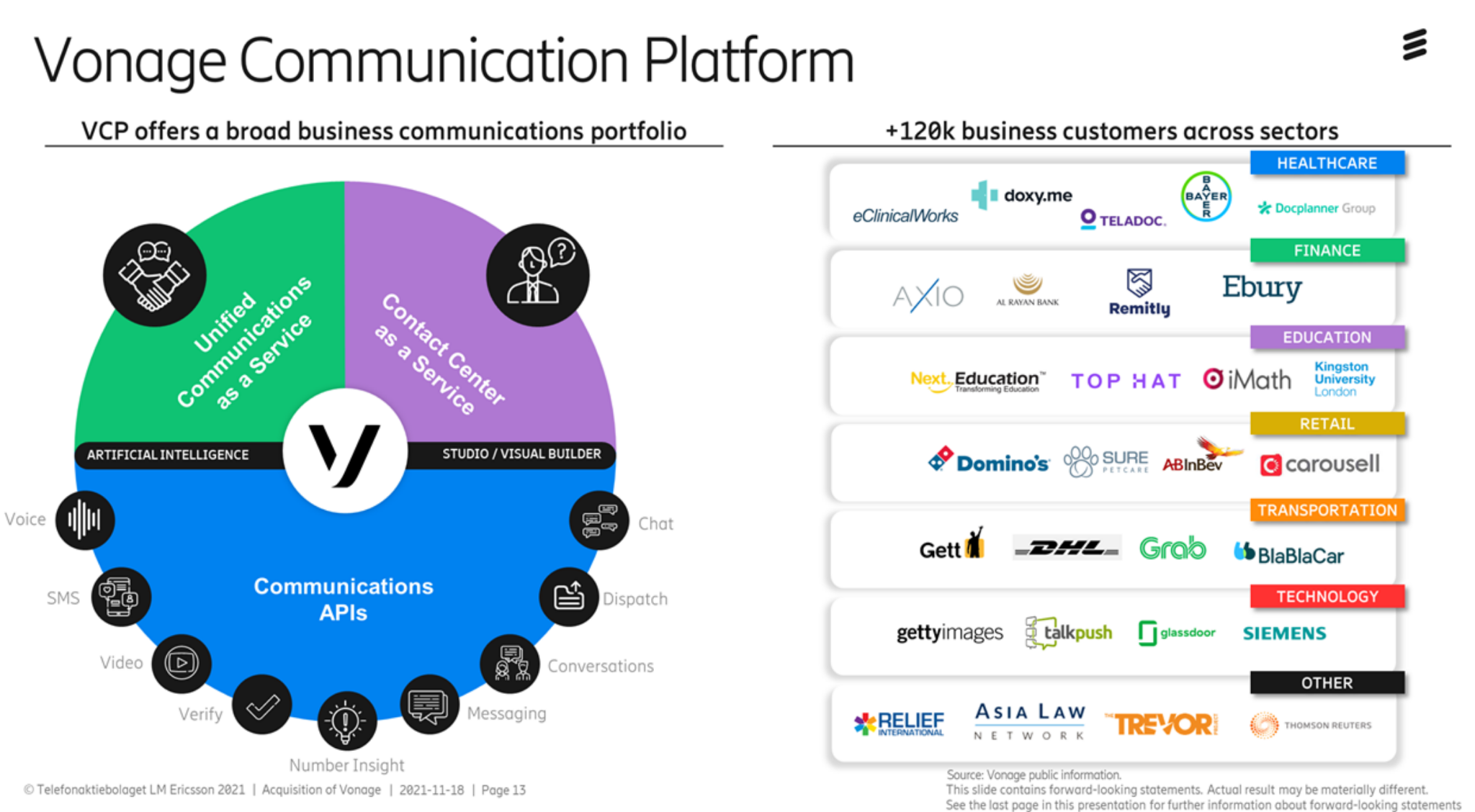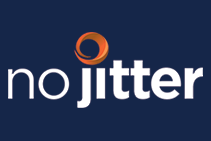Early today, we learned that Ericsson entered into
an agreement to acquire Vonage. Ericsson and the Vonage board agreed on a purchase price of $21 U.S. per share, paid in cash, with an approximate total evaluation of about $6.2 billion. The price represents a premium of 28% over Friday’s close.
The acquisition is expected to close in the first half of 2022, subject to Vonage shareholder and other approvals. Vonage will become a wholly-owned subsidiary of Ericsson. Rory Reed will remain CEO and will join Ericsson's executive team. Ericsson expects to retain all of Vonage’s 2,200 employees.
The acquisition is an intriguing one. It will allow Ericsson to get back into the enterprise space, but it was really the Vonage Communications Platform (VCP) and its strong financials that attracted Ericsson.
Let’s start with VCP, or more accurately, APIs. Vonage got into the CPaaS business when
it acquired Nexmo in 2016. It was a confusing move at the time, and Vonage’s stock price dropped after the announcement. At that time, applications and developer tools were separate services sold to separate buyers.
But the acquisition was just ahead of the market. CPaaS makes applications extensible. Today, many UCaaS (and CCaaS) providers have expanded into CPaaS. The two go well together, and now Ericsson is thinking the same about wireless infrastructure. Ericsson expects that the communications API expertise at Vonage, and its million-plus developers, will make its 4G and 5G solutions more compelling to its communications service provider customers.
Enterprise communications and cellular have not had a lot in common, but that’s beginning to change. Ericsson
shed its PBX business in 2008 (to Aastra, now a part of Mitel) to focus on service providers. Alcatel-Lucent spun out Alcatel-Lucent Enterprise in 2014 for similar reasons.
But the sectors are beginning to converge again. This year, we saw T-Mobile invest in Dialpad, AT&T, Verizon, Vodafone, and other cellular providers are working with RingCentral, and AT&T was the first to launch Cisco’s Webex Go, which improves call quality for its customers using Webex.
It’s important to note that VCP is not just another UCaaS platform. After the acquisition of Nexmo, Vonage set out to rebuild itself with its CPaaS tools. VCP is arguably the most modern communications platform in the industry: It has a cloud-native architecture that heavily leverages APIs and microservices. It offers multizone redundancy and supports customer data residency requirements. Nexmo is at the heart of VCP, and VCP is at the heart of all of Vonage’s services.
The strategy has been working. Vonage grew VCP revenues from $804 million in 2019 to $915 million in 2020. It’s not just revenues, but it also saw improvements to margins, cash flow, and EBITDA. UC and CC are growing, but the APIs for voice, messaging, video, and services like Verify for Authentication were very strong. In the third quarter of 2021, Vonage grew API revenue by 43%. The Vonage API business grew with improved metrics, while major competitors slowed down.
Video APIs did particularly well during the pandemic. They are a part of the VCP story today but came to Vonage via the 2018 acquisition of TokBox — a pioneer in WebRTC video APIs.
Vonage will contribute over a billion in revenue to Ericsson, while its costs are expected to drop. Ericsson expects to realize $400 million in cost synergies over the next few years. Ericsson expects the transaction to be accretive to EPS and free cash flow. The deal seems low risk. After all, Vonage will continue growing and improving key financial metrics.
On the other hand, it’s a $6 billion acquisition, and it marks an expansion into enterprise services. The goal is for Vonage to add significant value to its 5G proposition, presumably with core enterprise communications applications and APIs for 5G providers. It’s a risky shift considering most service providers already have solutions for enterprise communications. The question is just how disruptive 5G may prove to be.
I wrote in the most recent
Insider Report that Vonage was in play and speculated Salesforce would be attracted to the Vonage Contact Center, which is the highest-rated contact center in the Salesforce AppExchange. A reasonable acquisition in general, but particularly after Microsoft’s expansion into customer engagement for Dynamics. However, Vonage was likely an attractive acquisition target for many vendors. Vonage is profitable and growing and has a comprehensive communications suite. It owns and controls its technologies and isn’t too big to swallow.
I didn’t foresee Ericsson, but I appreciate the fit. It seems inevitable that wireless infrastructure will move toward enterprise communication services with 5G. CPaaS is a good place to start, and Vonage has a strong and diverse customer base in Europe and North America.
With a market cap around $37 billion, Ericsson is the latest big company to join the enterprise communications landscape. The giants are coming. Microsoft launched Live Communications Server in 2003, which evolved into Teams. More recently, we’ve seen companies such as Meta (Workplace), Amazon (Connect and Chime), Google (Meet and Chat), and Salesforce (Slack) launch or acquire enterprise communications and collaboration services. And you can bet more are coming.
Dave Michels is a contributing editor and analyst at TalkingPointz.











